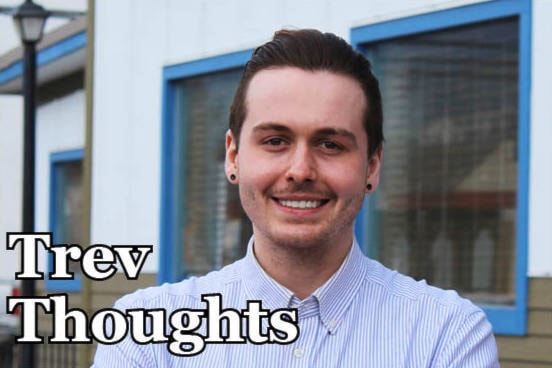In the days following the announcement that Kam McLeod and Bryer Schmegelsky had been charged in the murder of Leonard Dyck, there has been a rash of discussion over social media about how the racial identity of the two has affected the RCMP’s investigation to the matter.
Some say authorities have only been so quick to act because McLeod and Schmegelsky’s alleged victim was white.
Others have gone even further and suggested that — in 2019 — police go out of their way to sweep Indigenous murders or disappearances under the rug (my wording is very specific here as I do acknowledge there was absolutely a time in Canadian history where police would have been both complicit and complacent in the above accusation.)
Even more delusional is the suggestion that law enforcement actively conspires against solving murders or missing persons cases that involve Indigenous people.
These claims are both unfounded and insulting (both to our men in blue and to the numerous Canadians who have advocated for and made strides in the relationship between this country’s Indigenous people and settlers.)
They’re also wrong.
In a sentence: the police catch criminals.
McLeod and Schmegelsky have not been convicted of anything, however they have been charged with the death of Dyck.
It really is that simple, but of course the Internet conspiracy-meets-inflated-rhetoric machine had to get a hold of the story.
This is not to say that Indigenous people don’t face hardship, or even systemic discrimination.
Just look at the lack of access to safe water across numerous reserves in Canada.
Then cross reference those locations with poverty and suicide rates.
Boom — examples of systemic racism.
I can even get behind the idea that some police — not law enforcement as an entity, but individual officers — discriminate against non-white (and by that extension Indigenous) individuals more than they do white people, even today (although certainly less than in the past).
But to suggest that if Dyck was an Indigenous individual police would be doing less to solve his murder — or ignoring it altogether — is at best ignorant and at worse intentionally disingenuous.
In many MMIW cases, the individual has never been found, meaning that police have less physical evidence to go off of and less of an ability to determine specific details about their deaths, such as whether foul play was involved (versus accidental or suicide).
In many cases where a body has been found, there has been relatively little information for police to go off.
This is true in the murder of 18-year-old Jessica Patrick, a case in which both the police and family members have pleaded with the public to come forward, noting that even the smallest, seemingly-insignificant detail can break the case wide open.
The reality is that these cases (McLeod and Schmegelsky are also suspects in the deaths of Lucas Fowler and Chynna Deese, whose bodies were discovered on July 15 near Liard Hot Springs) have much more evidence for police to work with than that of Patrick’s.
This includes numerous people who have spoken to the RCMP about interactions they had with Deese, Dyck or Fowler in the days and hours leading up to their death.
It also includes the multiple burned out vehicles, thought to have been used by McLeod and Schmegelsky, they have found. I would be remiss too, amongst all the attacks against law enforcement for trying to catch suspects in three seperate murder cases, if I were not to mention a critical point, especially in the context of all the comments about police allowing an epidemic of murders against Indigenous women to take place.
Let me, again, be very clear about what I’m saying here: racism exists.
Indigenous individuals, especially women and children, are statistically at a higher risk to go to jail or be killed by the police in a day-to-day interaction than white people.
They had to survive the genocidal experiment that was residential schools, the “Sixties Scoop” and numerous other examples of discrimination which can absolutely be explained by racism.
But you know what can’t be?
The fact that, as confirmed by RCMP Commissioner Bob Paulson in 2015, 70 per cent of the solved murders of Indigenous women were committed by Indigenous men.
If we are genuine in our desire to solve MMIW cases (and I am the first to admit it’s a systemic issue that must be addressed), then perhaps we need to have a tough discussion about how it’s predominantly not white people responsible for them in the first place.
Trevor Hewitt is a reporter at the Smithers Interior News.
trevor.hewitt@interior-news.com
Like us on Facebook and follow us on Twitter
